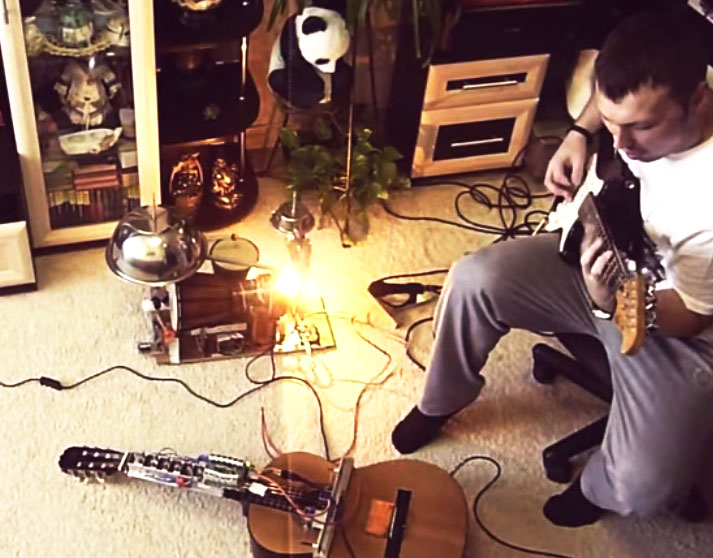Touchless MIDI: The Secret’s In the Mitten
MIDI is a great tool for virtually any musician. Unless you’re a keyboard player, though, it might be hard to use it live. [Evan] recently came up with a great solution for all of the wistful guitar players out there who have been dreaming of having a MIDI interface as useful as their pianist brethren, though. He created a touchless MIDI controller that interfaces directly with a guitar.
[Evan] set up an Arduino Nano to handle the MIDI interface to the computer. A detector coil from a previous project was installed onto the guitar can recognize how far away the guitarist’s hand is from the body of the guitar, giving the musician control over an effect of their choosing. The guitarist simply needs to be wearing a special mitten for use with the detector coil. [Evan] also added three tactile buttons, meaning that this MIDI usefulness can be extended to three different selectable effects.
Be sure to check out the video below for a demonstration of how the interface works. [Evan] has also made the schematics and Arduino code available if you decide to build your own. This isn’t [Evan]’s first MIDI rodeo, either. He’s also created a MIDI drum interface from a Rock Band drum set, too.
Filed under: musical hacks












